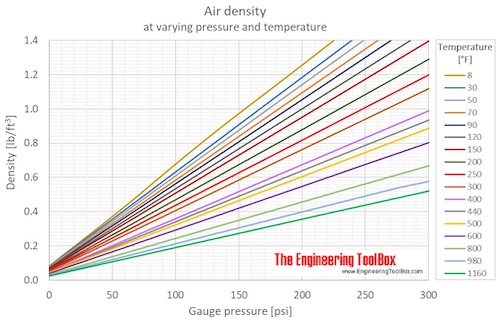

Enter the actual station pressure (not the altimeter setting) and choose a unit: Density Altitude in meters: in of mercury mm of mercury millibars (hPA) m. Learn what is standard air density and air density at sea level, air density table, etc. if you stand on heights you will have less air above and therefore the pressure is lower. Air Pressure is also related to the weight of air i.e. The molecules are much more spread out, they collide and interact much less. Enter the air temperature and choose a unit: Density Altitude in feet: Fahrenheit Celsius Kelvin. Density of Air is dependant on several factors such as relative humidity, temperature, pressure and altitude, etc. In the middle atmosphere ( stratosphere and mesosphere, between 15 and 100 km altitude) the chemistry becomes simpler, because the complex organic molecules are broken into smaller pieces before reaching that height.

Density is defined as the mass per unit volume. Simpler chemistry in the middle atmosphere Typical densities of various substances are at atmospheric pressure. There is also a lot of mixing, interactions and complex chemistry. The troposphere at the bottom (below 15 km altitude) is quite opaque to infrared light because there are a lot of molecules packed together. In the same way, the density of the atmosphere goes down exponentially as you go up in altitude, meaning that the number of molecules of gases that you will find in one cubic meter decreases by one million as you go up from the surface to 100 km altitude.Īs a result, the various atmospheric layers behave very differently. You can imagine Earth’s thin coating of gases as an Eiffel tower, very large and heavy at the bottom, but very quickly slimming down to the thin, light top of the tower. Army created a standard atmosphere model Standard Metro model, which it used until the early 1960s and is still employed by the shooting industry to this day because of the wealth of data it generated in its 50 or so years of use.The main point to remember is that it is about the density of the air. This makes it impossible to derive a set of equations that positively states what the density, pressure or temperature will be at a given altitude, yet we need a reasonably accurate estimate of these things.īecause this estimate is important for aviation and weather forecasting, the U.S. Storm fronts, cold fronts, warm fronts, temperature changes and so on mean the atmosphere changes continually.

Therefore, when it comes to long-range competition, it's important to have an understanding of how changes in these conditions will influence your trajectories as the weather changes or as you travel to different areas of the country.Ītmospheric conditions-barometric pressure, altitude, temperature and humidity-influence air density. This shortens its time of flight, meaning gravity does not have as much time to pull it downward and thus our shot goes higher than we would see in a denser air condition. So if the air is less dense-fewer molecules occupying a specific volume of space-a bullet does not experience as much drag force against it and so slows at a lower rate and is traveling faster than normally expected when it arrives at the target. Each molecule the bullet hits robs it of a tiny fraction of its energy, and thus the bullet slows. Air is comprised of billions of molecules the bullet must push aside on its way to the target.


 0 kommentar(er)
0 kommentar(er)
